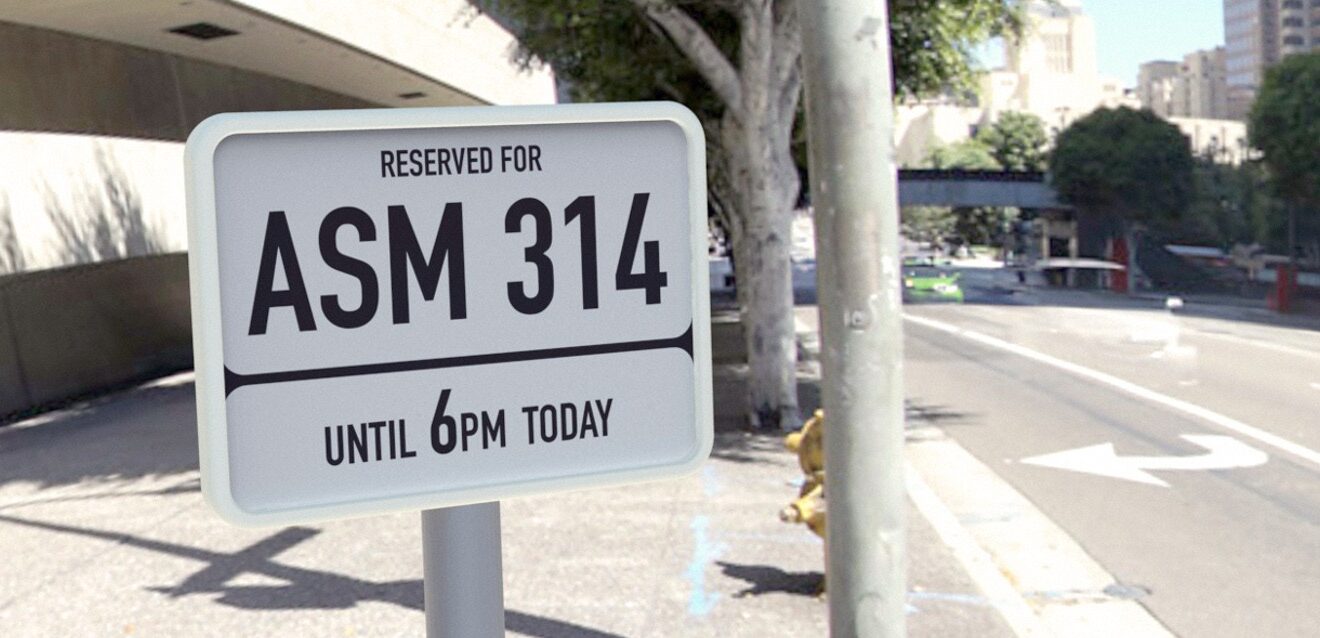

Reinventing Parking Signs
Visionect, 15 Sep 2014
Parking in big cities can quickly turn into a real nightmare. Even when you find a free parking spot, an over-sized parking sign with a number of rules can make it impossible to discern when and for how long you are allowed to park. Luckily, there is a way to resolve this parking sign confusion.
Energy efficient e-paper parking signs provide clear and concise information that can be easily changed via 3G or Wi-Fi.
As there are never enough street parking spaces, it is of the utmost importance that the dedicated parking lots are utilized to their full potential. But these parking lots can have a number of confusing restrictions and rules.
Some are fully open to the public, some are open only at certain hours and at certain days. All this leads to a large number of signs, or to one very large and possibly confusing sign. What is more, these regulations may often change. What do you do then? Either you physically replace signs, add new ones, or risk great confusion amongst the eager seekers of parking spaces. Of course, adding new signs to the existing ones can cause even greater confusion than not adding them at all.
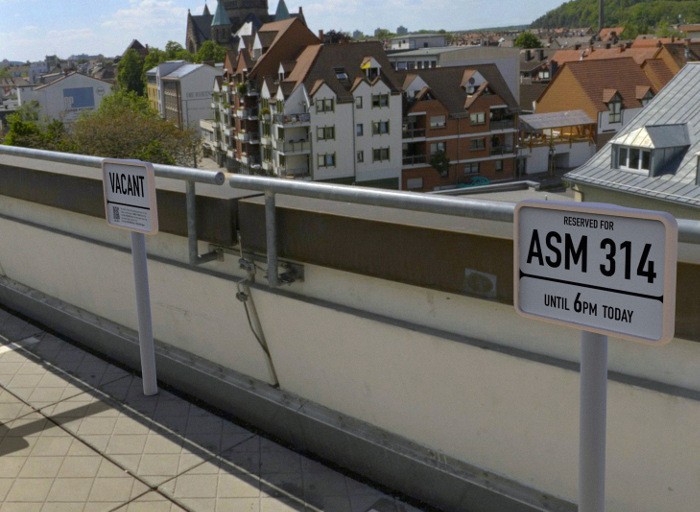
Since content can be changed so easily, parking rules would always be up-to-date.
Confused no more
How to solve this Gordian knot of signs? Our partners gave us an inspiration to explore a concept solution to the problem. With the help of Miha Feuš, a promising interaction designer who also spent some time working in the automotive industry, we found a solution which envisions replacing the usual parking signs with digital ones equipped with e-paper displays. The signs would provide clear and concise information, but their most important aspect is that the displayed information could be easily changed. The popular car blog Jalopnik recently came to a similar conclusion in response to the story of a ridiculously long pole with numerous signs.
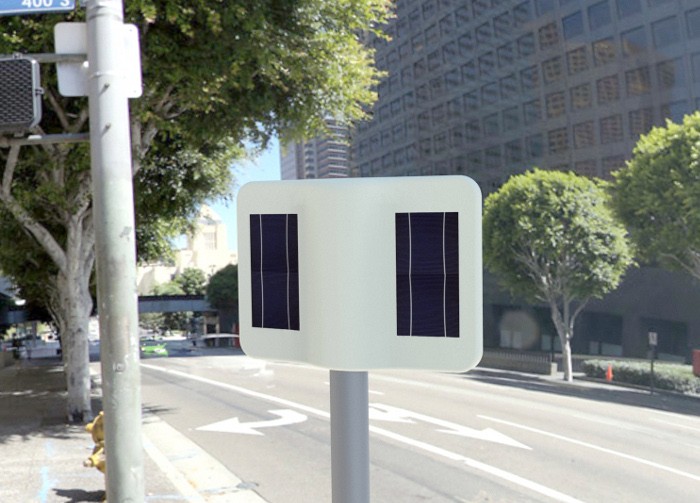
Added solar panels ensure that the e-paper parking signs are as green as they can be.
As far as content is concerned, digital signs would display data received from the server via a Wi-Fi or 3G connection, which means that updating the content would only take moments, regardless of the position of the signs. What is more, the whole system (and content) could be configured by a mobile app and integrated into an AirBNB-like service for car parking across the world. In this way, the rules for every parking lot would always be up-to-date and drivers would always know where and when they may or may not park. The overall size of the signs is not an issue, as our engineers have already developed a solution which enables the tiling of several displays. It also provides both 3G and WiFi connectivity, ensuring that the signs are always connected.
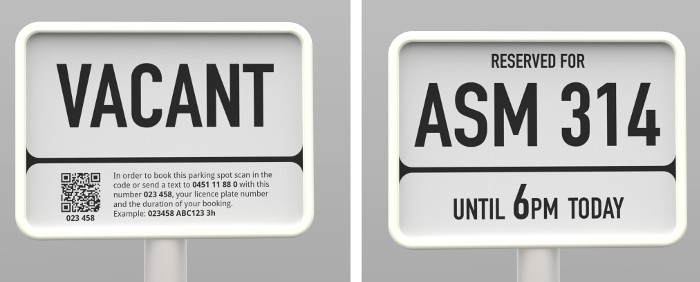
Sign content could also be changed with the help of a mobile app. Rules would therefore never be outdated.
Sustainable and efficient solution
The solution would present a great step forward in several aspects. The signs could change content at will and as frequently as needed, which would greatly reduce the waste coming from outdated signs. E-paper technology is perfect for the task since it provides excellent visibility even in direct sunlight, while a small amount of additional lighting is needed for night visibility.
One would think that digital signs require a lot of power to keep the display operational. Nothing could be further from the truth. The reason is the e-paper technology, which only requires a very small amount of power when refreshing content. When the picture is static, there is no power consumption at all. Such display can operate for months on end with very little power usage.
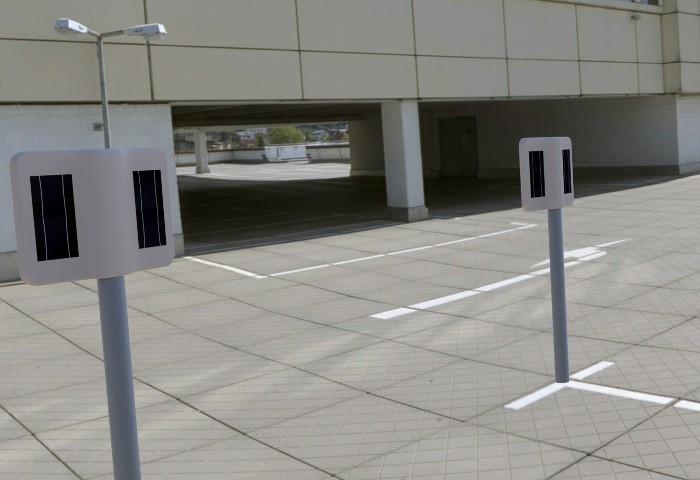
Because of the inherent low energy usage and solar panels, parking signs would not have to be connected to the electrical grid.
To make the entire solution even more sustainable, these signs would be equipped with solar panels for providing power. This means that the signs themselves would not even have to be connected to the electrical grid. In areas with sufficient sunlight, the latter would provide the little power they would need. The entire solution would therefore be completely self-sustainable.
E-paper equipped signs would be a perfect solution to a persistent problem. They would provide excellent visibility and easy content management, thereby ensuring that the rules displayed on the signs would always be up-to-date and readily available to the drivers.
Tags

